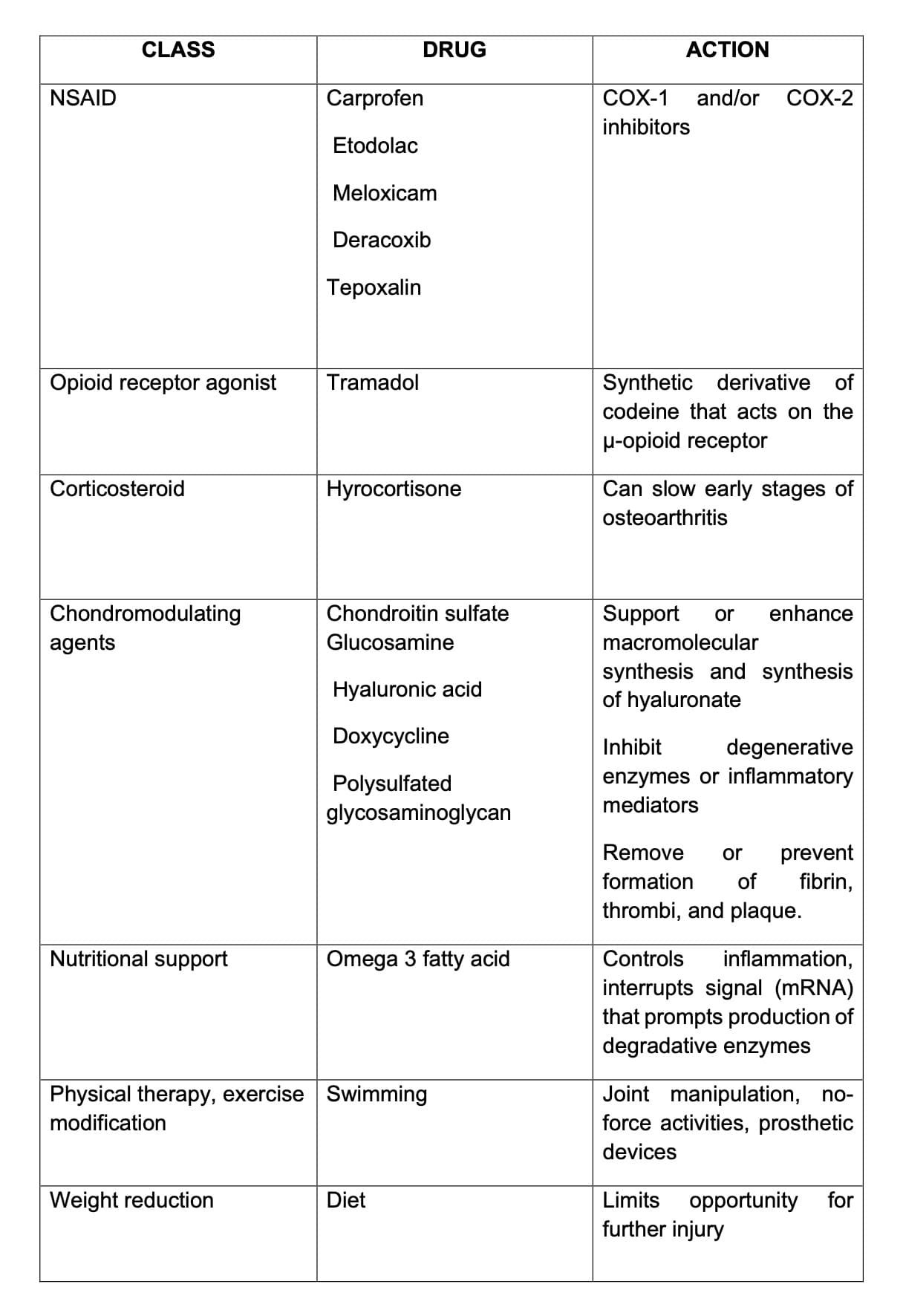Degenerative Joint Disease (DJD)
Degenerative Joint Disease (DJD) or Arthrosis refers to a noninflammatory degenerative joint condition characterized by a lack of inflammation in the synovial lining and the presence of normal or near normal synovial fluid.
Primary Degenerative Joint Disease is a degeneration of cartilage in elderly individuals occurring for no known reason other than the wear and tear that comes with aging
Secondary Degenerative Joint Disease develops secondarily from known conditions that affect the joint and supporting structures. This is perhaps the most common type observed in small animals
Two changes in bone occur in the presence of osteoarthrosis–
- Presence Of osteophytes
- Appearance of subchondral sclerosis
Risk factors for DJD
- Large size
- Fast growth
- Genetic predisposition
- Working dogs, athletes
- Obesity or Overweight
Clinical signs
- Reluctance to walk, run, climb stairs, jump, or play
- Difficulty in rising from rest
- Lameness
- Stiffness
- Yelping or whimpering
- Personality changes,
- Soreness when touched
- Lagging behind on walks
- Decreased mobility
- Aggressive behavior
Diagnosis
X-ray reveals Presence of osteophytes and appearance of subchondral sclerosis.
Treatment
The objectives of treatment for osteoarthrosis in animals are-
- To relieve pain
- To maintain function and range of motion (unless undertaking arthrodesis),
- To maintain or regain normal activity.
- Weight management
- Diet modulation (type; amount)
- Exercise
- Physical rehabilitation and physical modalities
- Nutritional supplements

Surgical Procedure
- Debridement of osteophytes and joint surfaces, , osteotomy, pseudoarthrosis, and limb
- Joint replacement (hip, elbow, knee)
- Excision arthroplasty
- Arthrodesis
- Joint dennervation
Inflammatory joint diseases caused by infection or immunological factors are not rare in pet practice, but they occur infrequently. These conditions are characterized by inflammation of the synovial membrane with resultant changes in the synovial fluid. The severity of joint destruction depends on the type of bacteria and the duration of infection.
- In acute joint infections, treatment should be undertaken immediately. The exudate should be evacuated (by aspiration or by arthrotomy), the synovium cultured.
- Antibiotics should be given before receiving the culture and sensitivity results because of the disaster that may result if protection is withheld while awaiting test results. Choice of antibiotics may be changed when the sensitivity results are known. Penicillin G in high doses (30,000 IU/lb twice a day) is good initial drug. Ampicillin and the cephalosporins are also useful. These antibiotics should be continued for 2 to 4 weeks.